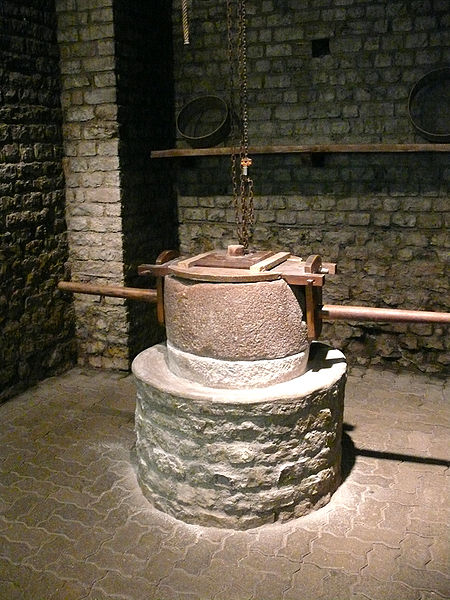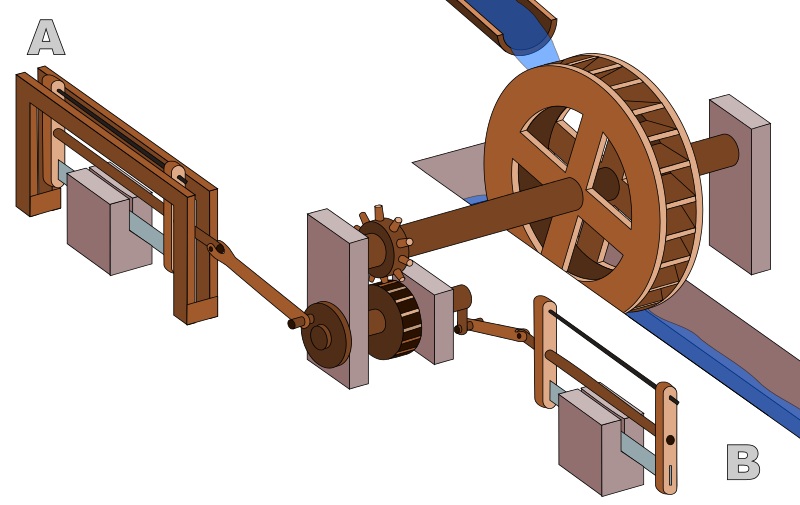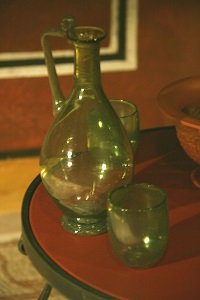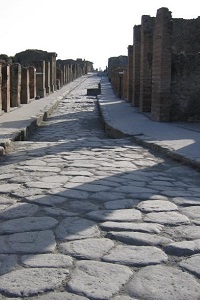Ancient Roman mills
Published on 17 September 2018Reading time: 6 minutes
Ancient Roman mills and developments in Roman milling technology are further examples of the Romans' stunning engineering skills. Roman mills were mainly used in agriculture to pound grain and grind flour. They used human, animal and water power and became increasingly complex machines by the 1st century AD. Their use was expanded to crushing ore, sawing wood and cutting stones and because they increased productivity and efficiency, they were an important part of the Roman economy.
Ancient Roman mills used in agriculture
Mills were important in agriculture as they allowed for the production of large quantities of flower used to make bread. Before mills were ever invented, people used saddle querns to grind cereals. A saddle quern was a rounded stone that was pressed manually against a flat stone bed thereby making the grinding process extremely labor-intensive and time-consuming.
In the late 5th century BC, the Greeks invented the first milling machine called the Olynthus Mill also known as the hopper mill. The Olynthus Mill consisted of two rectangular-shaped stones. The top stone had a long handle that was moved in a reciprocal fashion from side to side against a lower stone. The hopper was the hollow cavity with a slot in the middle through which the grain was fed.

in the open air museum of Augusta Raurica CC BY-SA 3.0 |
Milling technology advanced further with the introduction of rotary mills. The mola asinaria which dates back 200-300 BC was a basic rotary mill driven by blindfolded horses, donkeys or mules and used mainly to grind flour and corn. Sometimes it used human power and was driven by slaves. It had a horizontal axle attached to a shaft which was attached to a runner stone (the upper stone or the catilus). The runner stone had an hour-glass shape and a hopper at its top through which grain was poured. The bedstone (the lower stone or the meta) located below the runner stone stone had a conical shape and was stationary. The stones used were often volcanic rock (lava) for strength.
The last century BC saw another breakthrough in milling technology: the watermill. Watermills were more powerful than animal-driven rotary mills and allowed for the production of greater amounts of flour. There were various kinds of watermills using different kinds of waterwheels. There were three kinds of vertical waterwheels including the undershot waterwheel (water hitting the bottom of the wheel), the breastshot waterwheel (water hitting the middle of the wheel) and the overshot waterwheel (water hitting the paddles at the top of the wheel). The overshot water wheel was the most efficient and generated the most power, while the undershot waterwheel which usually used the stream of a river generated the least power. There was also the horizontal waterwheel where the wheel'scircular movement was horizontal.
The circular movement of the waterwheel had to be transferred to the runner stone. When the waterwheel was horizontal, the movement was transferred directly through a vertical shaft. When the waterwheel was vertical, a right-angle gear would convert the vertical circular movement to a horizontal rotation. The right-angle gear was a transmission system similar to transmissions systems in cars. It consisted of two cogwheels which increased the velocity of the runner stone and generated additional power.
Often the watermills would use the water power from a nearby aqueduct. Water from the aqueduct would be redirected to the waterwheels at high speeds through a system of tanks, mini-channels and pipes. Tanks and sluice-gates could also cut-off or limit the supply of water for example in times of inspections or repairs.
The Janiculum and the Barbegal mills are impressive examples of clusters of water-powered mills which produced flour on an industrial scale. The aqueduct and the walls of the mill complex in Barbegal near Arles, France are still visible today. Barbegal which operated between the 1st and 3rd century CE had 16 overshot wheels and could produce 4.5 tons of flour per day or enough to supply the 10,000 to 40,000 inhabitants of the city of Arelate (the city of Arles today).
Industrial mills
Ancient Roman mills used in mining
Roman mines used stamp mills which crushed the extracted ore before further processing. Stamp mills consisted of trip-hammers, powered by waterwheels through a system of cams. Stamp mills crushed metal ores down to small sizes in order to be smelted noting that they were also used in agriculture to pound grain. They could also be used to work red hot metal after the completion of the smelting process.
Mining operations had aqueducts built nearby that could be very long that brought water from far away rivers. The water was usually collected in large tanks that was then used either in either hushing operations or to power thee stamp mills. The Dolaucothi mines in Wales or in the Rio Tinto mines in Spain have aqueducts that are still visible today.
Just as with ancient Roman mills used to grind grain, stamp mills saved a lot of men and effort and grealty increased the speed of ore processing. Before the introduction of these ancient Roman mills in the 1st century BC, the Romans crushed the ore manually with was very time-consuming and required a lot of manpower.

stone sawmill CC BY 3.0 |
Ancient Roman mills used in construction
Romans also had water-powered sawmills which could cut large amounts of wood or stone (marble) and save huge amounts of men and effort. The sawmill was an amazingly complex machine consisting of reciprocating saws powered by a waterwheel. The saw was connected to a crank attached to a rotating shaft connected to the waterwheel. A system of cogwheels also increased the crank's velocity.
Some archaelogists believe that this water-driven sawmill is depicted on the sarcophagus of Marcus Aurelius Ammianos at Hierapolis dating back 250-300 CE. The Roman poet Ausonius also writes about the shrieking sound of a water-power sawmill near the river Moselle in Germany in the 4th century CE. Most historians therefore believe that sawmills were used throughout the Roman Empire to cut stones precisely and at high speeds and for other uses.
Incredible facts about ancient Roman mills
|
SOURCES
- The Oxford Handbook of Engineering and Technology in the Classical World (Oleson J.P., Oxford University Press, 2009).
- Grain-Mills and Flour in Classical Antiquity (L. A. Moritz, British Academy First edition, 2002)
- The Roman Watermills and Settlement at Ickham (P. Bennett I. Riddler C. Sparey-Green, Canterbury Archaeological Trust, 2010)
YOU MAY ALSO LIKE
Return from Ancient Roman Mills to Homepage

